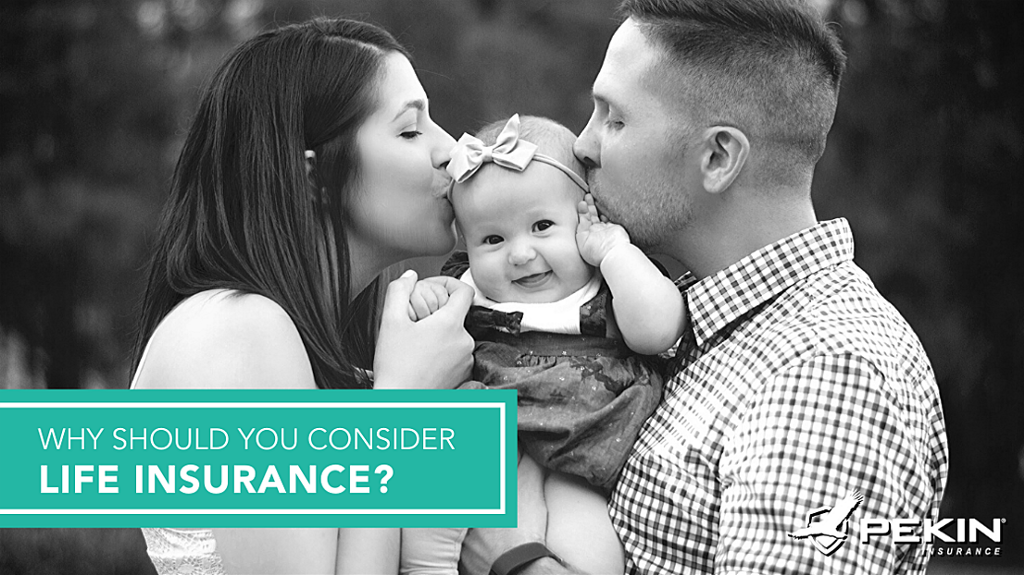Life Insurance Can Cover Your Family Through Every Stage

Time travel. That’s the only way to explain how the years disappeared. In the blink of an eye, a carefree teen changed into an adult with a house, a committed partner, and a family.
Don’t worry! From stacks of diapers to mortgage payments, life insurance can cover your family through every stage.
If you’re not there to support your loved ones, life insurance can take care of:
House paymentsUtilitiesHome maintenanceChildcareCar paymentsCollege tuitionSchool suppliesAnd more!
A Closer Look at the Family Life Cycle
The C.S. Mott Children’s Hospital says the family life cycle has five distinct stages:
IndependenceCoupling or marriageParenting: babies through adolescentsLaunching adult childrenRetirement or senior years
Are you living in stage three or approaching stage four? Let’s talk about life insurance and how it could help everyone who depends on you.
How Your Home Costs Add Up
The Balance says the average monthly mortgage payment falls somewhere between $1,022 and $1,505. You fork over the money for home upkeep, too.
The cost for maintaining your home depends on:
Where you live and the weather in your areaThe age of your houseHow many pets you have:You might need to replace filters and carpet more often.How many children you have:Kids have been known to color on walls and throw baseballs through windows.
You have to keep the electricity, water, and other utilities running, too.
Move.org says average utility costs in the U.S. total $398.24 per month:
Electricity: $110.76Natural gas: $72.10Water: $70.39Trash/recycling: $14Internet: $60Cable TV: $85
Have you done the mental math? Or, do you have these totals saved on a spreadsheet?
Either way, life insurance can cover mortgage payments, monthly maintenance costs, and utilities.
A Big Understatement: Childcare Is Expensive
According to Child Aware of America, childcare costs more than college tuition in 28 states. Their study includes center-based daycare and family-based care.
Over 70% of families spend more than 10% of their income on children, according to the Care.com 2019 Cost of Care Survey
We’ll drop the stats for a second. Think about what your family would do without you. It’s probably something you don’t like to dwell on.
That’s where life insurance comes in. It helps your loved ones pay for ongoing education and development, whether it’s daycare or college.
College Won’t Get Cheaper
Speaking of college, have you paid off student loans? Will you foot part of the bill for your children’s college education?
Forbes says the cost for attending university has increased nearly eight times faster than wage growth between 1989 and 2016.
Don’t bet on tuition and fees dropping anytime soon.
The College Board College Pricing Report shows the yearly costs for four-year universities:
Average in-state tuition and fees for public four-year sector: $21,950Average out-of-state tuition and fees for public four-year sector: $26,820Average tuition and fees for private four-year institutions: $36,880
You can have your kids apply for every scholarship or tell them FAFSA is their best friend. Should you have a backup plan, though?
Life insurance can wipe out student loan debt. Your coverage amount could account for college tuition and fees, too.
What About Trade School?
College isn’t for everyone.
Trade school offers lower tuition and more job-specific training. Plus, most of their programs take less time to complete.
Trade school degrees could lead to the following careers:
WelderChefGraphic designerPlumberElectrician
Still, the average trade-school degree costs $33,000, according to Hub & Spoke.
You probably know what we’ll say next. You guessed it! Life insurance could help pay for trade school.
From Clunkers to Luxury Vehicles
Don’t confuse a car payment with the total cost to own a vehicle. Nerdwallet says $8,649 is the average ownership cost for vehicles driven 15,000 miles per year.
Even if your kids drive family hand-me-downs, someone has to pay for:
GasRegistration and feesCar insuranceOil changes and maintenance
Your family fleet might have a bigger price tag than you thought, but life insurance can cover the costs of vehicle ownership.
Closing the Chapter: Your Final Expenses
When you’re gone, you’re gone. How do you want to be remembered?
You could cover all your final expenses with life insurance.
Here are average prices for traditional and cremation burials from the 2017 National Funeral Directors Association (NFDA) Report:
Non-declinable basic services fee: $2,100Removal and transfer of remains to funeral home: $325 Embalming services: $725Other preparation of the body: $250Use of facilities and staff during viewing: $425Use of facilities and staff during burial: $500 Hearse vehicle: $325Car or van services: $150Basic memorial printed materials: $160
These expenses add up to $4,960.
Now, we’ll take a quick look at the average price differences between cremation and a traditional burial.
Cremation:
Cremation fee (if using a third party): $350Cremation casket: $1,000Urn: $275
Traditional:
Metal casket: $2,400 Cemetery vault: $1,395
The average cremation costs $6,585, while the average traditional burial with a vault costs $8,755.
Variations on the Family Life Cycle
Everyone follows a different path in the family life cycle. Sometimes, relationships don’t work out. You could adopt a child or become a foster parent.
No matter what road you drive down, life insurance follows you and your loved ones through every twist and turn.
Your Next Steps
Your local, licensed Pekin Insurance agent can tell you more about life insurance.
They’ll work to find an affordable plan based on what you want to take care of after you pass away.
Reach out to a Pekin Insurance agent if you don’t have life coverage or don’t think you have enough.







